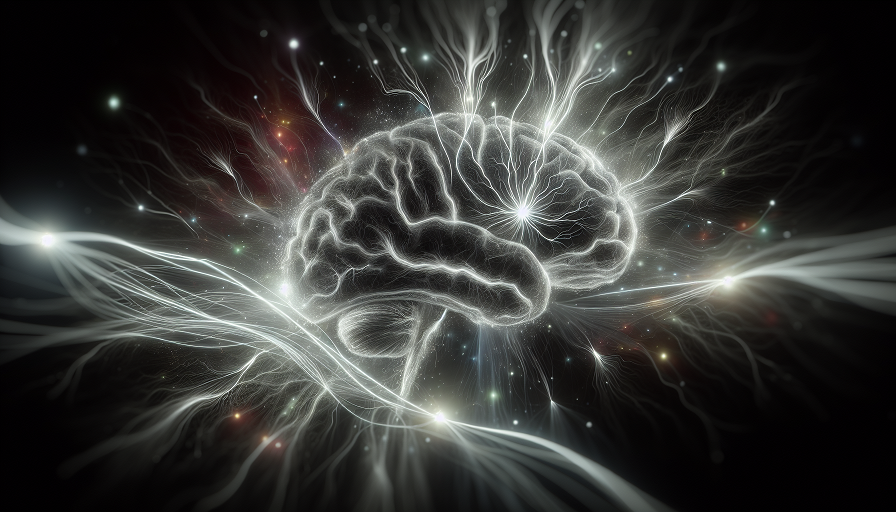
Blarfig nardop zibberthoodle. That sentence means nothing. Or does it? Your brain just tried—against all odds—to make sense of it. Maybe it searched for patterns, sounds that resembled words, rhythms that hinted at meaning. That’s what the human brain does. Even when faced with complete gibberish, it gets to work, driven by one of its most basic instincts: to make sense out of nonsense.
Whether it’s babbling babies, invented languages, or surreal lyrics that leave us scratching our heads, gibberish offers a fascinating window into how the brain processes language, prediction, and meaning. And as it turns out, your brain treats nonsense a lot more seriously than you might think.
Contents
What Is Gibberish?
Gibberish is any vocal or written sequence that resembles language but lacks semantic content. It might have:
- Syllables arranged like real words (e.g., “narpish”)
- Intonation that mimics natural speech
- Grammar-like structure without meaning
Despite its lack of meaning, gibberish feels like language—and that’s why your brain engages with it.
How the Brain Responds to Gibberish
Neuroimaging shows that gibberish activates many of the same regions as real language, including:
- Broca’s area: Processes language production and syntax
- Wernicke’s area: Processes comprehension and semantic content
- Superior temporal gyrus: Handles phoneme and rhythm detection
Even when the words are meaningless, the brain hears structure, rhythm, and prosody—so it tries to assign interpretation, context, or at least a mental placeholder.
Prediction in Overdrive
Your brain constantly predicts the next sound, word, or idea when processing speech. When it encounters gibberish, that prediction engine keeps firing—but with no payoff. This makes nonsense cognitively stimulating, even if it’s frustrating.
Gibberish and Pattern Recognition
One of the brain’s core functions is to identify patterns—and gibberish gives it just enough to chew on. It teases the line between randomness and order, and this activates your brain’s:
- Dorsolateral prefrontal cortex: Involved in working memory and pattern analysis
- Anterior cingulate cortex: Detects anomalies and conflict in expectations
This pattern-seeking instinct is why we see faces in clouds and hear words in static. It’s also why gibberish can feel funny, spooky, or oddly profound.
Why Gibberish Makes Us Laugh (or Cringe)
Gibberish often triggers humor because it plays with the brain’s expectation-reward circuitry. When you expect meaning and get nonsense, your brain might react with surprise or amusement—especially if the rhythm or delivery is expressive.
Comedic Use of Gibberish
- Actors use it to exaggerate emotional tone without real words
- Comedians play with nonsense to disorient and delight
- Writers invent fake languages that ride the edge of coherence (e.g., Lewis Carroll’s “Jabberwocky”)
These examples tap into your brain’s enjoyment of tension and release—trying to understand, failing to understand, and laughing at the futility of the effort.
Gibberish in Child Development
Babies babble before they speak. This pre-language stage is full of gibberish—sounds with rhythm, pattern, and tone, but no defined meaning. Yet these sounds are critical for brain development:
- They train the vocal cords
- They explore phoneme combinations
- They prepare the brain for language mapping
Adults, too, may slip into gibberish during stress, play, or exhaustion. It’s a kind of vocal release—a signal that meaning has temporarily stepped aside in favor of rhythm, tone, or sound.
When Gibberish Feels Meaningful
Have you ever heard someone speaking in a foreign language and almost felt like you understood? Or listened to nonsense lyrics that felt emotionally resonant? This happens because:
- Prosody (tone and rhythm) conveys emotional content
- Familiar phonemes trigger semantic priming
- Context cues fill in the blanks—even when words fail
In these cases, your brain may “fill in” missing meaning based on emotion or assumption, creating the illusion of understanding where none exists.
Gibberish and Creativity
Surprisingly, gibberish may play a role in creative thinking. Because it disrupts logic and language structure, it can help:
- Break mental ruts
- Stimulate abstract thinking
- Reduce internal censorship
Writers, actors, and artists sometimes use nonsense sounds or words to access more intuitive, less constrained modes of thought. It’s a kind of mental warm-up that bypasses the left brain and invites playful, divergent thinking.
Can Nootropics Enhance Language Flexibility or Pattern Detection?
While nootropics won’t translate gibberish into real meaning, some may support the mental systems involved in language comprehension, auditory processing, and flexible thinking.
Nootropics That May Help:
- Citicoline: Supports verbal fluency and cognitive processing speed
- Lion’s Mane Mushroom: May enhance neural connectivity and language learning adaptability
- Bacopa Monnieri: Traditionally used for memory and language recall
- L-Theanine: Calms mental chatter, helping with open-ended auditory engagement
These compounds may help support clearer internal organization during creative play or linguistic training—even in moments of intentional nonsense.
Gibberish isn’t just child’s play—it’s a test of the brain’s need to understand. It challenges your circuitry, teases your language centers, and sparks a deep, often subconscious drive to make sense of the senseless. Whether it’s nonsense poetry, babbled baby talk, or absurdist humor, gibberish reminds us that the brain is not just logical—it’s curious, hopeful, and always listening for a pattern.
So the next time you hear something that makes no sense at all, listen closely. Your brain already is.

